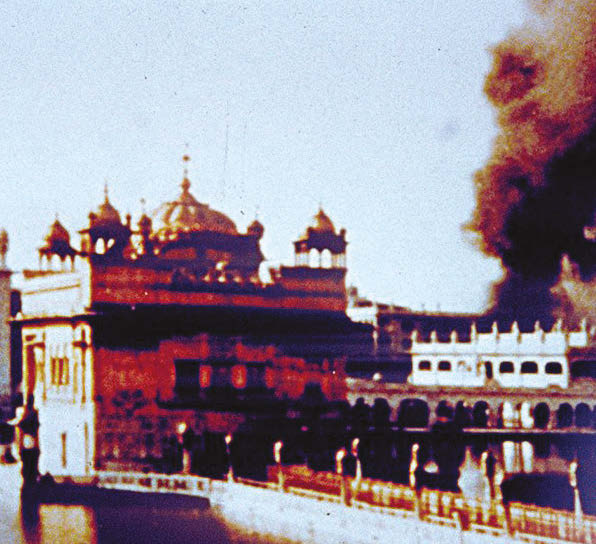
It’s often described as a watershed moment in Indian history-the government of the day ordering a military assault on Sikhism’s holiest shrine, unleashing a chain of events that included a rare revolt in the disciplined Indian Army and the assassination of then Prime Minister Indira Gandhi followed by sectarian violence.
After 32 years of Operation Bluestar-the military code name for the mission to reclaim the Golden Temple in-from a group of armed Sikh militants led by Jarnail Singh Bhindranwale who had called for the creation of a separate Sikh state of Khalistan.
More than three decades on, the Golden Temple reveals the existence of physical and psychological scars that seared the psyche of the Sikh minority in India. Deep holes created by high-velocity bullets and shells slamming into marble and brick still pockmark some walls and stairwells of the temple complex that sees thousands of visitors walking through its portals every day.
Kulwant Singh, a volunteer at the Golden Temple, readily points out the bullet holes and parts of a collapsed façade as reminders of the army assault. Though born five years after Operation Bluestar, Singh has heard innumerable details of the assault from his elders. “Each detail I have heard is etched in my mind,” he says. When asked if he has forgiven the state for the assault, he shrugs.
The in-charge of a museum inside the temple complex says he lived through the moments that still evoke a complex mix of emotion that include grief, anger and humiliation. In 1984, he was a member of the All India Sikh Student Federation (AISSF), which also supported the call for a separate Sikh state.
On 5-6 June, he says he was in the langar (community kitchen) area. He brushes off questions about how he survived those heart-stopping hours. “The main thing is I survived; it’s all thanks to the almighty.”
The community kitchen is a long rectangular building that lines one side of the amrit sarovar (pool of nectar) that surrounds the Golden Temple, also known as Harmandir Sahib. The devout reach the temple following the parikrama, or square pathway, that circumscribes the sacred pool in a clockwise direction. Connecting the pathway with the Hari Mandir is a marble causeway. The other buildings that line the sides of the sarovar include the museum, a library which had old texts and manuscripts and the Akal Takht (throne of the immortal) that stands in front of the causeway leading to the Harmandir Sahib.
He recalls that Bhindranwale and some of his supporters moved into a sarai (hostel) in the temple complex some time in 1982. Bhindranwale was not yet regarded as a terrorist though his influence was growing across Punjab. He was a “charismatic preacher” with an arresting personality, “over 6ft tall, with mesmerizing eyes, a fiery preacher who could draw crowds,” he says. “When he set out to do something, he did it. There were some bus drivers who he heard were under the influence of alcohol in Sirhind (in Fategarh district). The sant (Bhindranwale) called them in and spoke to them. They immediately quit, such were his persuasive skills,” he recalls.
“We will always be proud of him,” says Gurpura Singh. That there is a cenotaph inside the temple complex dedicated to Bhindranwale is testimony that Gurpura Singh is not alone in his beliefs.
The museum has among its exhibits a portrait gallery of martyrs of the faith. The lineup includes Bhindranwale, Bhai Amrik Singh, head of the AISSF, and major general Shabeg Singh, a veteran of the 1971 India-Pakistan War, dishonorably dismissed from the Indian Army and who later joined Bhindranwale.
From all accounts, it was Shabeg Singh who planned the defense of the temple complex-fortified bunkers inside strategically located towers and heights, marked-out sniper positions, laid-out communication lines and positioned men armed with light machine guns in underground passages who took out Indian army commandos as they launched the assault on the night of 5 June.
Bhindranwale grew in stature after he took on the state government following the 1981 assassination of Lala Jagat Narain, founder of the Punjab Kesari group. Bhindranwale was arrested in the case and then let off for want of evidence, catapulting him from murder suspect to a hero within the space of a month, notes Ramachandra Guha in his book “India After Gandhi”.
Emboldened, he began speaking of a separate Sikh state, after having earlier called Sikhs slaves in India. There are reports that he also turned to Pakistan for help. This rang alarm bells in Delhi. The central government reached out to its arch foe the Akali Dal on its long pending charter of demands-making Chandigarh the capital of Punjab, declaring Amritsar a holy city, a greater share of the waters of the rivers Beas and Sutlej and greater autonomy for the state-first put together in 1973.
The talks did not lead anywhere. In the meantime, Bhindranwale was courted by the Akalis, who saw him as a threat to their influence, say news reports. Bhindranwale’s brother Harcharan Singh Rode says Akali leader Gurcharan Singh Tohra invited Bhindranwale to stay at the sarai inside the temple complex in the early 1980s. Bhindranwale moved into the Akal Takht in December 1983 when he was convinced that the government would launch an operation to evict him.
A report in the latest issue of Caravan magazine says Indira Gandhi was opposed to a military operation to clear the temple complex, but arguments presented by her advisors who included her elder son Rajiv and army general K. Sundarji persuaded her.
Noted journalist and author Kuldeep Nayar says he “suspects” that Rajiv and his close advisers persuaded his mother on the grounds that a military operation would help the Congress win elections that were due in Punjab. “Mrs Gandhi consulted me about the operation through one of her confidantes. I said clearly that the military should not be sent in… This advice was not taken,” Nayar says.
On the night of 5-6 June, Sohan Singh and Gurpura Singh recall they were in the langar area when Operation Blue Star was launched. On 2 June, Gurpura Singh says a curfew was imposed in the state, which meant that “those like me who were inside the complex could not go out. They also cut off communications links and stopped traffic.”
The next day, being the martyrdom day of Sikhism’s fifth guru Arjan Dev who died in the early 17th century, the authorities relaxed the curfew to allow people inside.
“As a result, there were many hundreds of people inside the temple. Many of those inside the temple were killed when on the morning of 4 June, there was firing without any warning. There was total chaos as people began desperately to seek safety. The worst casualties were among the women and children,” says Gurpura Singh. The museum has two boards listing more than 700 people it says were killed in the temple complex on 4 June by the firing.
“The fact that they (Indian Army and government) started the operation on the day of the guru’s martyrdom shows they did not care for us or our sentiments,” says 58-year-old Satbir Singh, a hardware store owner in Amritsar. “We Sikhs have shed blood for this country.”
The late Sikh historian and author Khushwant Singh talks of the “notable role” played by the Sikh peasantry in helping Indian troops on the front line in the 1965 war with Pakistan in an essay in the book The Punjab Story.
The bodies of Bhindranwale and Shabeg Singh were discovered in the Akal Takht, narrates lieutenant general K.S. Brar in his book Operation Blue Star: The True Story.
Thirty one-year-old Jagjit Singh, a resident of Amritsar, says that though he was just a year old when Operation Blue Star took place, “I feel angry when I think about it. Those who lived through it must have felt much worse, which is why Mrs Gandhi was killed (by her Sikh security guards) in revenge. We (Sikhs) have always avenged our insults,” he says. Gandhi’s assassination was followed by a massacre of Sikhs across North India, something the government of the day did little to stop.
News of the damage to the Akal Takht also triggered a revolt in sections of the Indian Army. According to Brar’s book, just 3% of the army, a majority of whom were young and unseasoned, were involved in these revolts and mutinies.
Nayar says that Sikhs felt all the more insulted by Operation Blue Star and the sectarian violence “as they felt this happened as they are in minority.” The 2001 census pegs the number of Sikhs at less than 2% of India’s billion plus population.
Jaskiran Singh, a professor of defence and national security studies at Punjab University, is of the view that “it was Operation Blue Star and the violence that followed, that militancy grew in Punjab. It took almost a decade to quell it.”
Three decades on, tensions between Hindus and Sikhs triggered by Operation Blue Star are gone, says Ashutosh Kumar, a professor of political science at Panjab University.


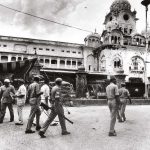
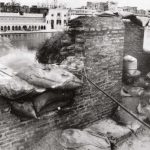
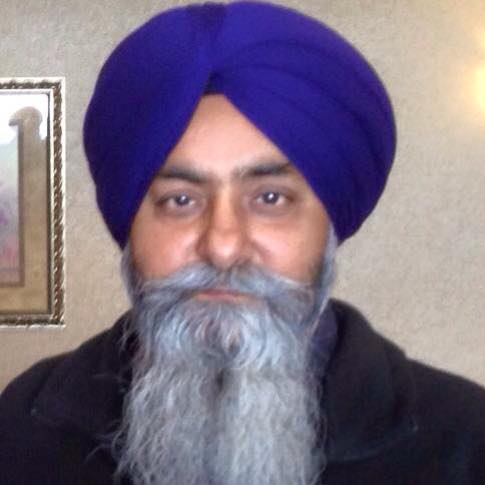
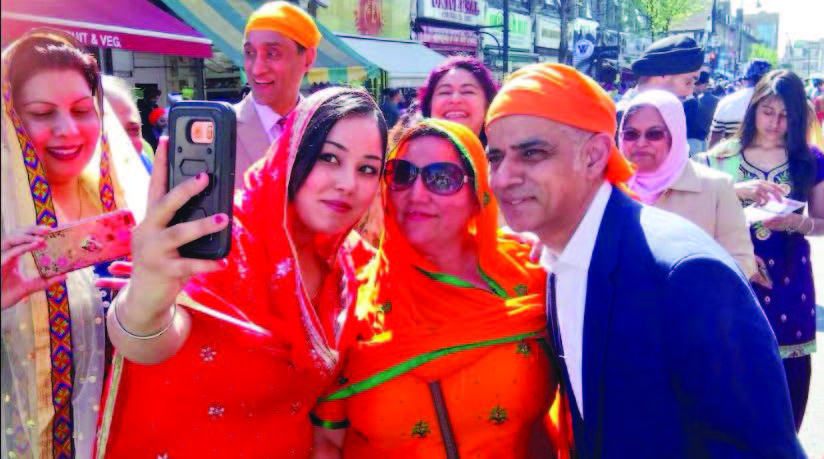
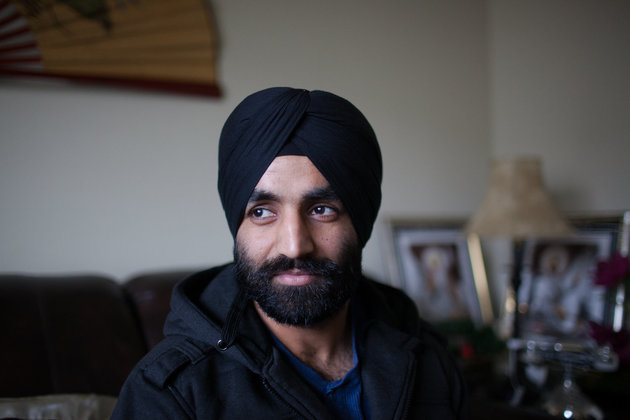
Be the first to comment